Living in the Netherlands has given us the chance to experience various aspects of Dutch life, like commuting by bicycle, visiting windmills, and making a seasonal trek to the tulip fields. There’s one pastime we heard about when we moved here, however, that we knew we couldn’t miss—wadlopen.
Wadlopen is the Dutch term for mudflat walking, a activity popular in the far northern part of the country. In the province of Friesland, the Dutch mainland is bordered by a string of barrier islands known as the Frisian Islands (this line of islands also extends into Germany and Denmark). Separating the mainland from the islands is the shallow Waddenzee (Wadden Sea). The area is the largest unbroken system of intertidal sand and mudflats in the world, and is distinctive enough to be designated as a UNESCO World Heritage Site. Twice a day at low tide the water retreats from the Waddenzee, leaving mudflats and sandbars, places where it is possible to pass on foot from the mainland to the islands. The terrain can be hard to navigate, and with risks of rising tides catching slower or disorientated wadlopers, guided tours are a must.
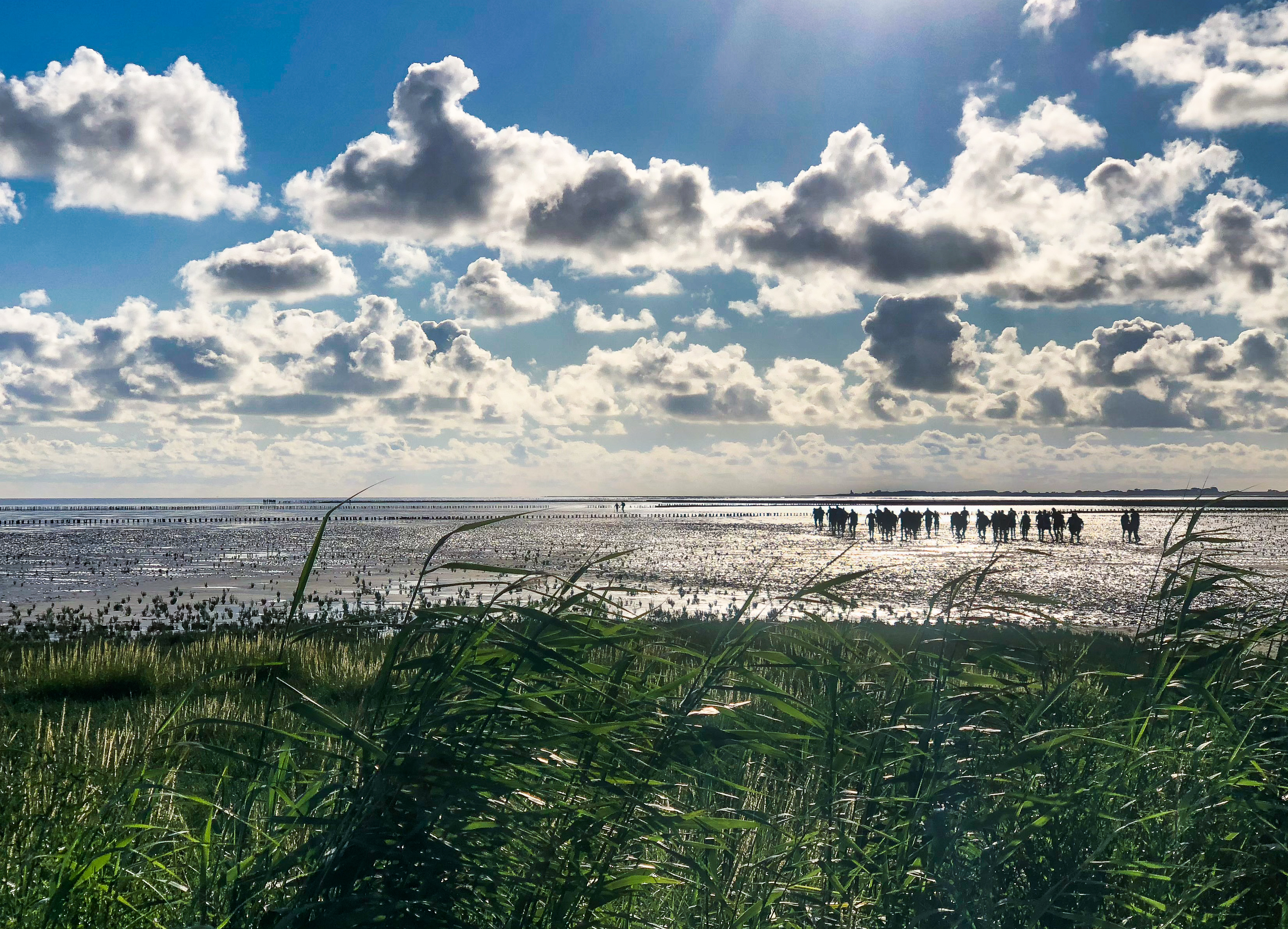
 On a beautiful summer morning, we set out on a wadlopen adventure of our own. We booked a tour through Wadlopen Centrum Pieterburen, a company with decades of experience. A detailed packing list included the things you would take on any normal hiking trip: water and snacks, a warmer layer, sunglasses, sunscreen. There were other specifications specifically for the sport of trekking through the mud: clothes that dry quickly and can get dirty, a change of clothes in a waterproof bag, dry shoes. Perhaps the most important element, however, was the footwear. We had no idea what to wear, and they recommended high-top canvas shoes. We bought some inexpensive pairs off of the internet, and we were glad we did. Anything else would likely have gotten stuck in the muck and ripped off our feet—our canvas pairs certainly got saturated and filled with mud by the end, but they were the best choice.
On a beautiful summer morning, we set out on a wadlopen adventure of our own. We booked a tour through Wadlopen Centrum Pieterburen, a company with decades of experience. A detailed packing list included the things you would take on any normal hiking trip: water and snacks, a warmer layer, sunglasses, sunscreen. There were other specifications specifically for the sport of trekking through the mud: clothes that dry quickly and can get dirty, a change of clothes in a waterproof bag, dry shoes. Perhaps the most important element, however, was the footwear. We had no idea what to wear, and they recommended high-top canvas shoes. We bought some inexpensive pairs off of the internet, and we were glad we did. Anything else would likely have gotten stuck in the muck and ripped off our feet—our canvas pairs certainly got saturated and filled with mud by the end, but they were the best choice.
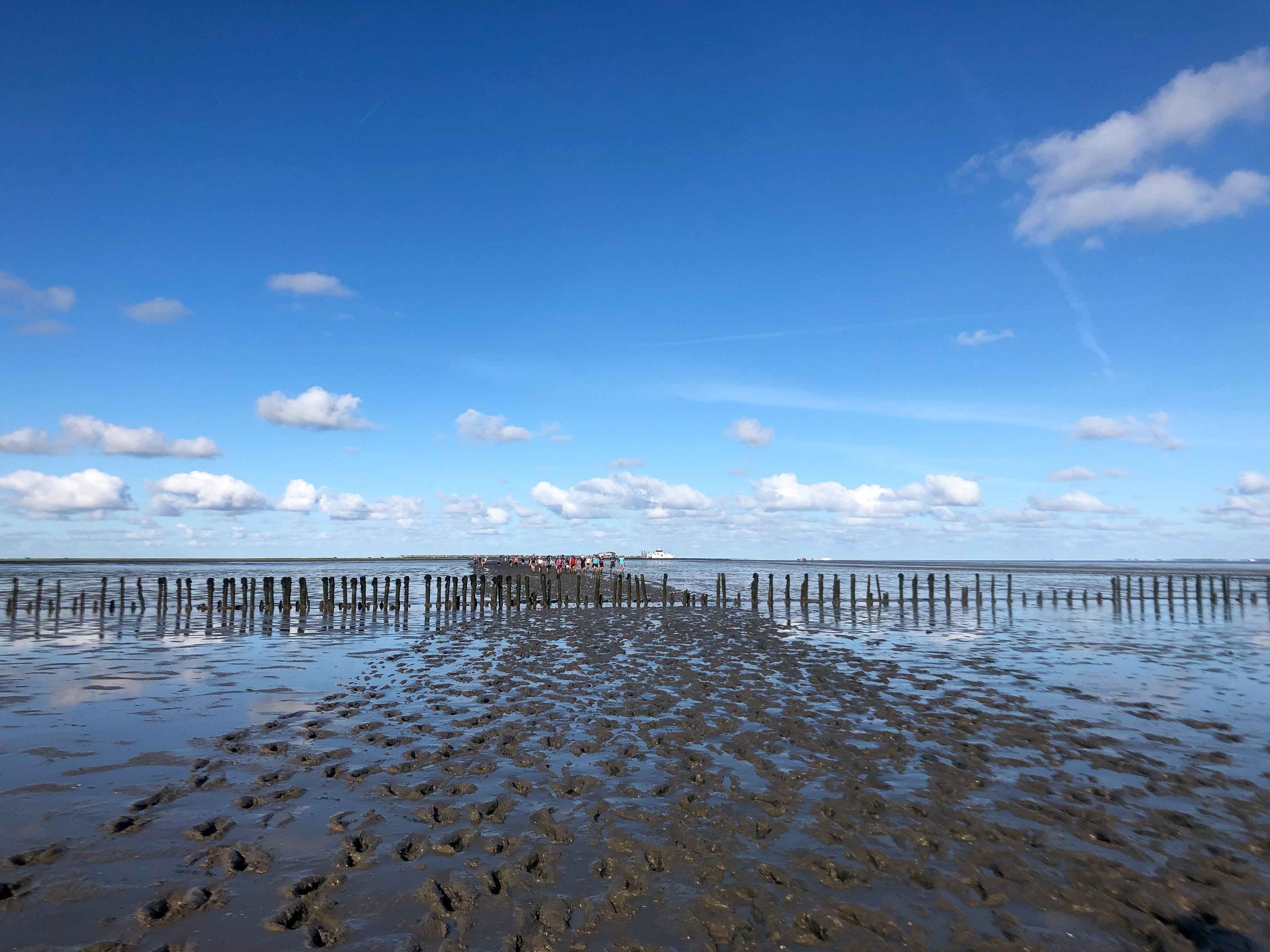
 We met our group early on a Sunday morning at the ferry pier in Holwerd. After a short briefing (in Dutch) and quick inspection of our footwear, we set off into the mud directly from the pier. We were warned that the first hour would be tough, and the guides were right. We headed east and sloshed through what seemed like endless stretches of slippery, silty mud. At times the mud was knee deep, and it was hard to figure out the best technique—high steps which splashed you with muck or more of a sliding motion? No matter what we tried, we found ourselves coated with mud.
We met our group early on a Sunday morning at the ferry pier in Holwerd. After a short briefing (in Dutch) and quick inspection of our footwear, we set off into the mud directly from the pier. We were warned that the first hour would be tough, and the guides were right. We headed east and sloshed through what seemed like endless stretches of slippery, silty mud. At times the mud was knee deep, and it was hard to figure out the best technique—high steps which splashed you with muck or more of a sliding motion? No matter what we tried, we found ourselves coated with mud.
 After the first hour, we started to head north, and the terrain became more variable. We started to wade through stretches of water with noticeably firmer mud below, and eventually we reached beds of mussels which poked up through the shallow water like little islands. The guide stopped to give a brief lesson on the shells we were standing on—lots of mussels, but also several types of oysters and cockles. Tiny crabs scurried between our feet.
After the first hour, we started to head north, and the terrain became more variable. We started to wade through stretches of water with noticeably firmer mud below, and eventually we reached beds of mussels which poked up through the shallow water like little islands. The guide stopped to give a brief lesson on the shells we were standing on—lots of mussels, but also several types of oysters and cockles. Tiny crabs scurried between our feet.

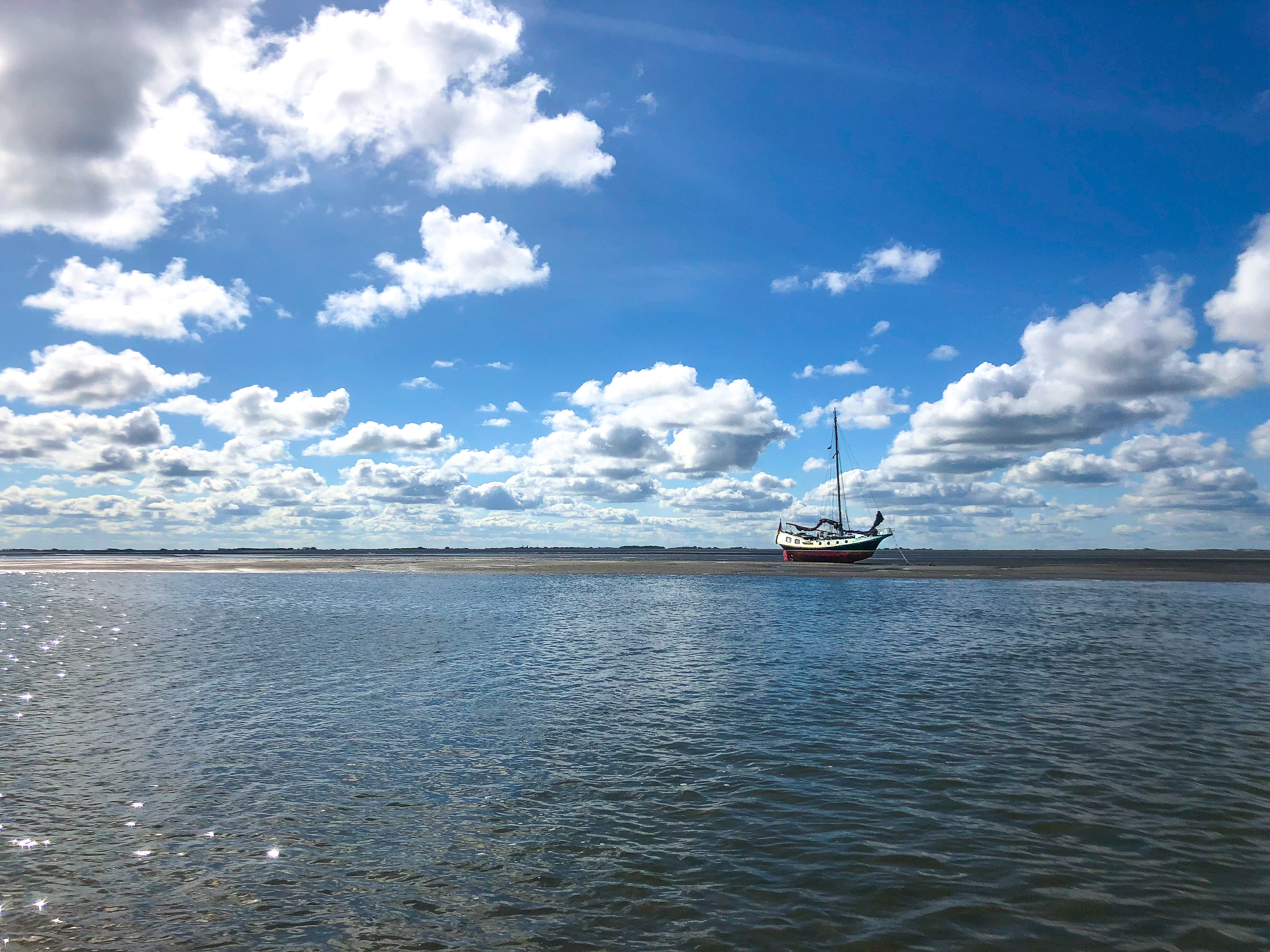
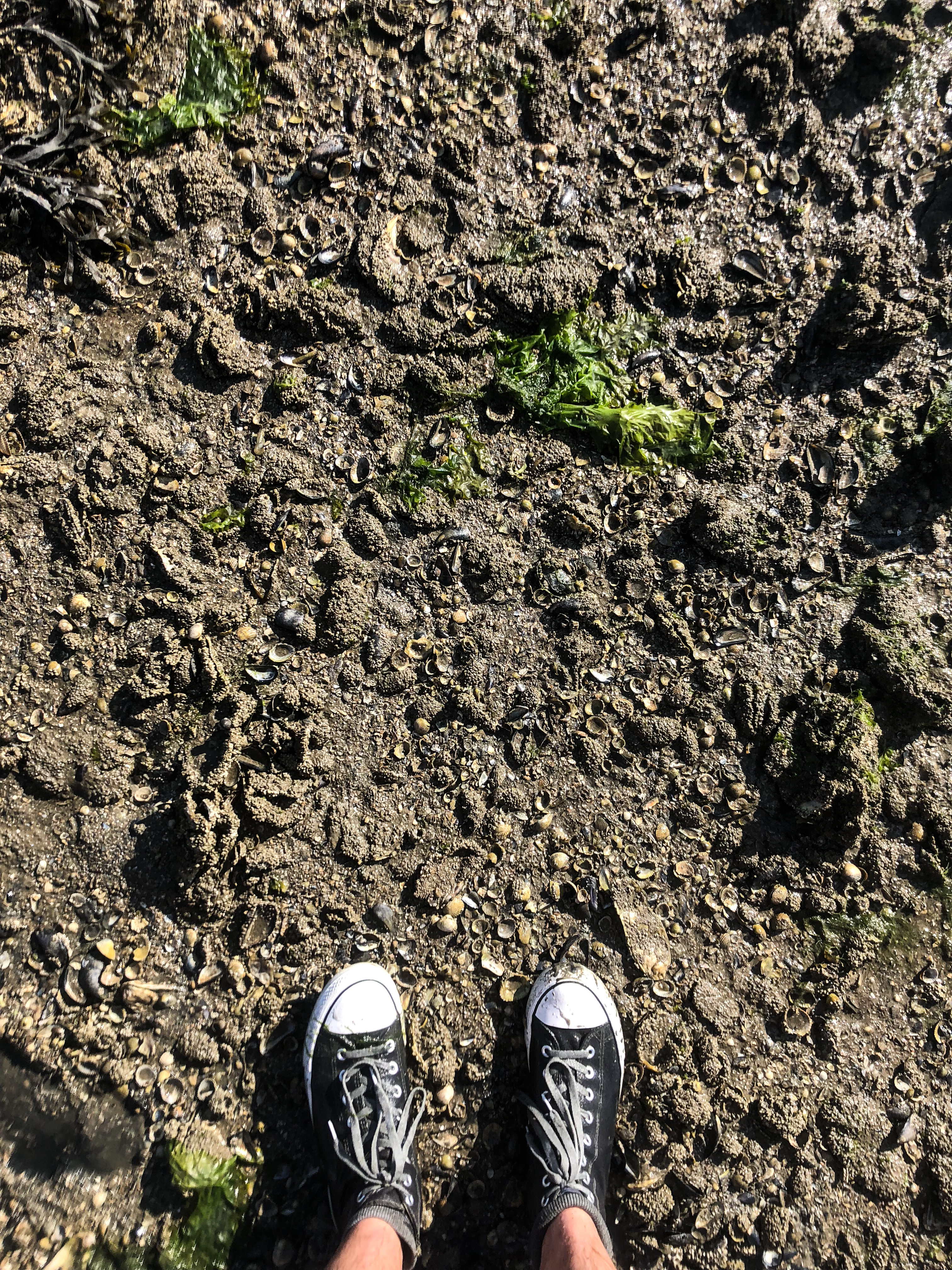 We passed over several other mussel beds and then reached a much sandier area. An anchored ship sitting on the seabed hinted at just how deep the water must be at high tide. We worked our way over the bands of sand which were punctuated by gullies that we needed to traverse. Our guides would find the best (and shallowest) areas for our crossings by using long poles and, even at that, the crossings would sometimes find us waist deep in the water (and holding our backpacks on our head lest our belongings get saturated).
We passed over several other mussel beds and then reached a much sandier area. An anchored ship sitting on the seabed hinted at just how deep the water must be at high tide. We worked our way over the bands of sand which were punctuated by gullies that we needed to traverse. Our guides would find the best (and shallowest) areas for our crossings by using long poles and, even at that, the crossings would sometimes find us waist deep in the water (and holding our backpacks on our head lest our belongings get saturated).

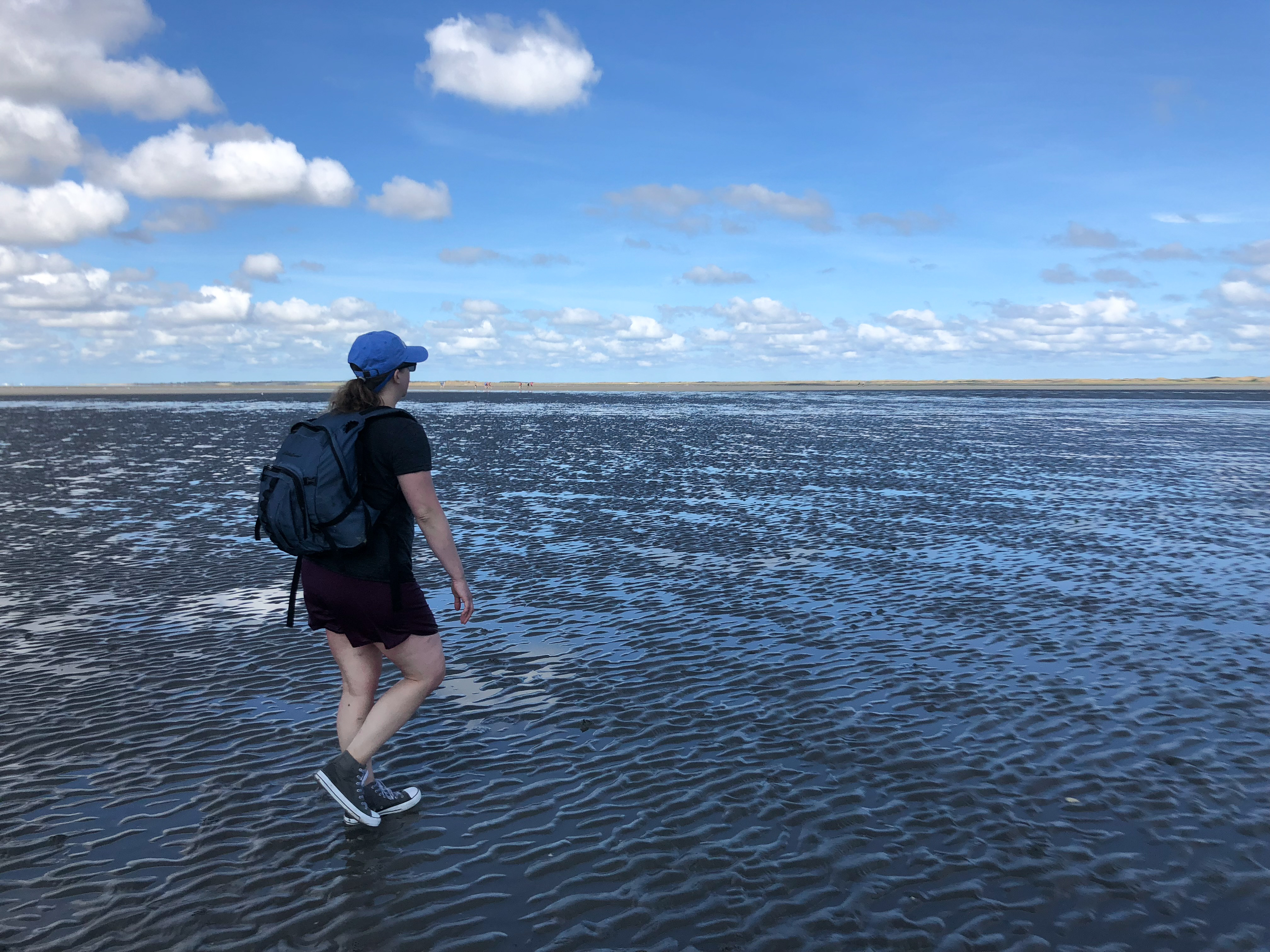
We finally got to what seemed like the final sandbar after a particularly deep gully crossing, and the group stopped to take a breather. Ameland island was just ahead and a goed gedaan (well done) from the guide made us feel like we were reaching the tail end of the journey. Little did we know some of the worst mud was yet to come! From the last sandbar to the island, we slogged through dark, briny mud, rich with seaweed that would occasionally become tangled around our ankles and shoes. Regardless, this was one of the most beautiful parts of the walk with the island just ahead of us, and flat expanses of mud, sand, and water in all other directions.
We finally reached land, legs exhausted and our shoes completely covered in black muck. We had walked to the far eastern side of Ameland, just over 10km in about four hours. At the point where we reached land, we climbed the island’s largest sand dune, 24m high, for some panoramic views of where we had just come from, and then crossed to the other side of the dune and continued on to the beach on the North Sea side of the island. The group was quick to plunge into the North Sea and rinse away all traces of mud, and remove our saturated and filthy shoes and socks. It was a beautiful sandy beach and the water was just the right temperature for a quick soak.
We were picked up by the strand ritten (beach rides) tractor which tows trailers full of people from the eastern point of the island back towards the largest city of Nes. We hopped a ride and worked our way back to the beach north of Nes, made a stop for some well-earned lunch, and then took the bus back to the island’s ferry pier. The 45-minute ferry ride back to Holwerd completed our long round-trip excursion.
GETTING THERE AND AWAY
We took the train to Leeuwarden, the capital of Friesland. As we had an early morning departure for our mud walk, we decided to spend the night in Holwerd, the town closest to the ferry terminal. We rented a simple room at the small guesthouse De Gouden Klok, which included a basic breakfast that was available before our mud walk. Bus service is available from Leeuwarden to both Holwerd and the ferry pier, but given the hour of our departure we needed to drive. We picked up a Greenwheels car right at Leeuwarden Station, and it made it easy for us to arrange our own arrival and departure from the mud walk.
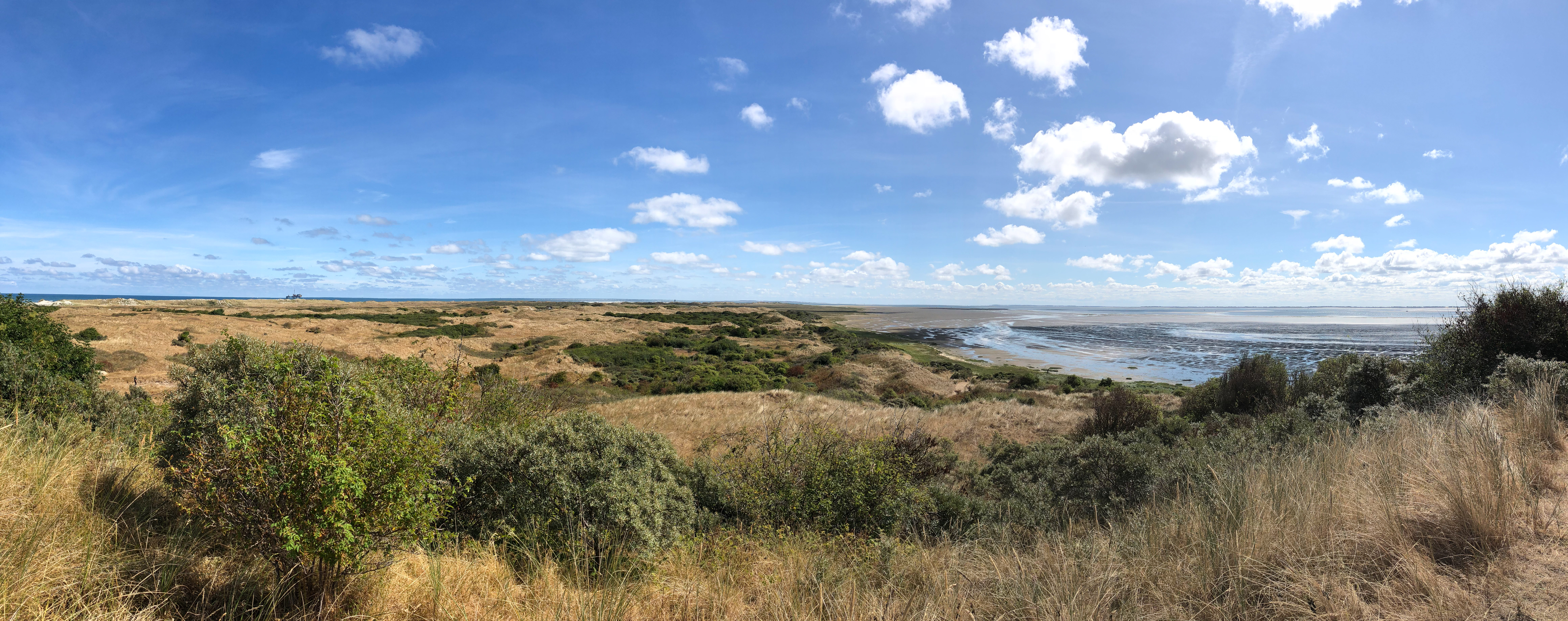 Taking part in wadlopen feels, in a way, like completing a Dutch rite of passage. The walk was hard—harder than we expected—and messy, but being on the sea floor on a beautiful summer day was a unique experience we couldn’t pass up. We love all kinds of outdoor activities, and this adventure gave us a whole new perspective on the Netherlands and allowed us to see the beauty of the far northern reaches of the country.
Taking part in wadlopen feels, in a way, like completing a Dutch rite of passage. The walk was hard—harder than we expected—and messy, but being on the sea floor on a beautiful summer day was a unique experience we couldn’t pass up. We love all kinds of outdoor activities, and this adventure gave us a whole new perspective on the Netherlands and allowed us to see the beauty of the far northern reaches of the country.


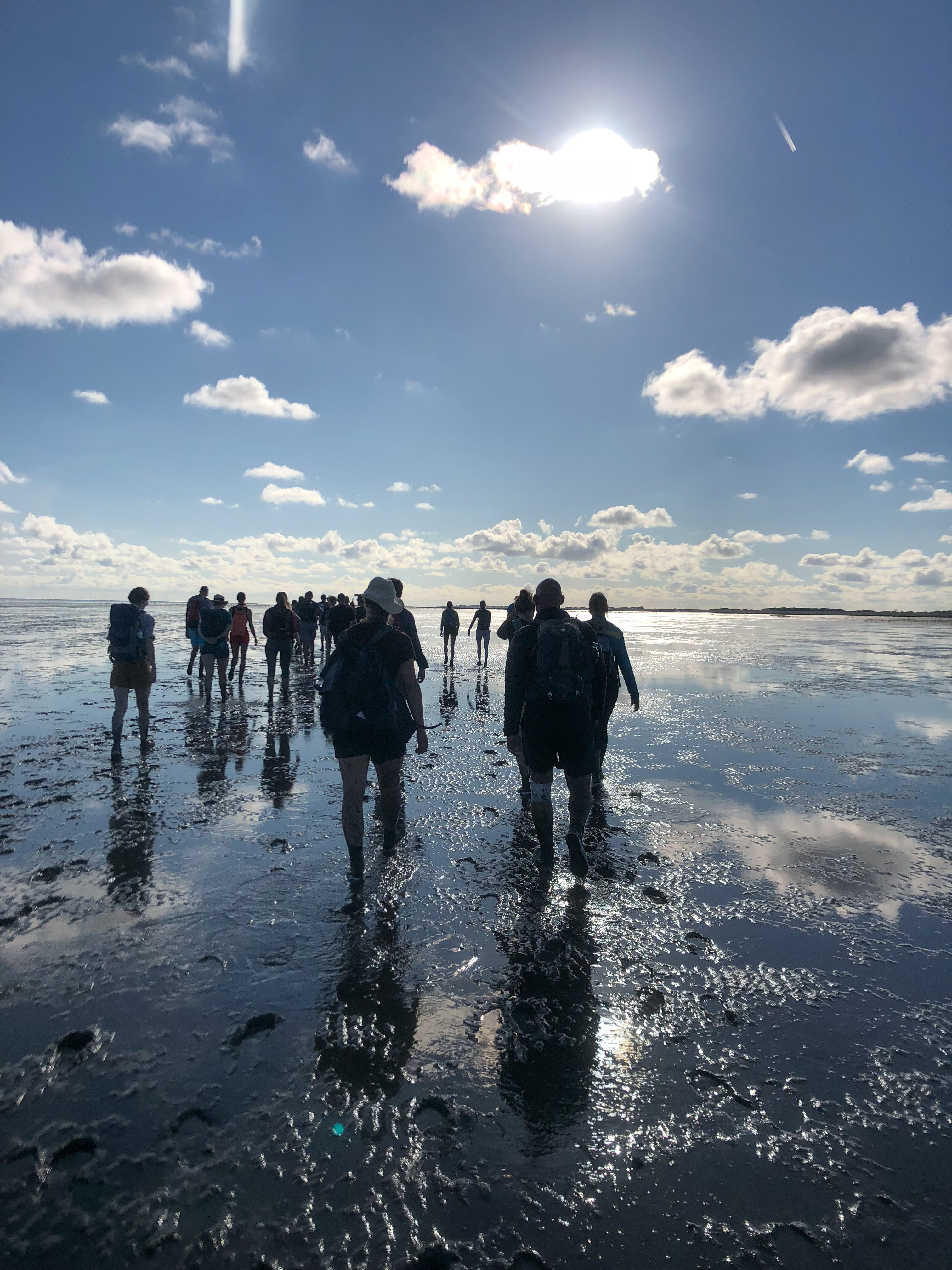


Ok, so maybe I won’t get to experience this, but I enjoyed your description!
LikeLiked by 1 person